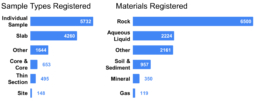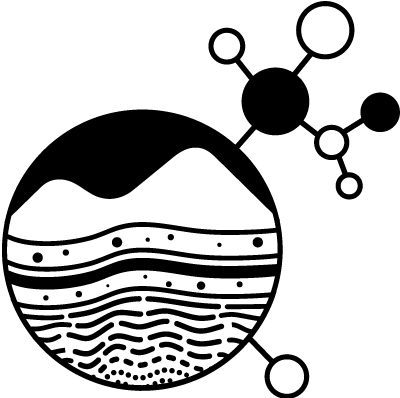May 2019, Vol 2 Newsletter
May 2019
This newsletter summarizes new features and improvements in the System for Earth Sample Registration (SESAR²). Click on the links below for more detailed information.
New Samples in SESAR²
13,233 samples have been registered in SESAR² since February 2019. Browse the complete SESAR² catalog with more than 4.3 million samples.
Tutorials & Help Pages
Don’t forget to check out our help page for information and tutorials about using SESAR² to register, update, and manage your samples.
SESAR² Sample Type Highlights

SESAR² Community
- SESAR² will co-host a workshop “Vive les Samples! Geosample data management and visualization for the discerning geochemist!” at the Goldschmidt Conference in Barcelona on August 18th from 8:30-12:30. This workshop will be of interest to all geochemists who collect samples and have an interest in extending the impact of their samples. Please register here.
- EarthChem and SESAR² presented at the CZIMEA Toolkit workshop, an EarthCube cyberinfrastructure training and tool assessment workshop which aims to bring together tool developers and early career Critical Zone scientists.
- Join us on twitter @igsn_info!
IGSNs in the Literature
- Gonzalez et al., 2019, Characterization of soil profiles and elemental concentrations reveals deposition of heavy metals and phosphorus in a Chicago-area nature preserve, Gensburg Markham Prairie. doi: 10.1007/s11368-019-02315-5.
- Check out the Gensburg Markham Prairie site and related samples in SESAR². Characterization and elemental analyses of soil cores are also published in the EarthChem Library.
- Barnes et al., 2019, The role of the upper plate in controlling fluid-mobile element (Cl, Li, B) cycling through subduction zones: Hikurangi forearc, New Zealand. doi: 10.1130/GES02057.1.
- Click here to browse the spring water samples from the Hikurangi subduction zone in SESAR².
- Giguet-covex et al., 2019, New insights on lake sediment DNA from the catchment: importance of taphonomic and analytical issues on the record quality. doi: 10.31223/osf.io/cnh3r.

